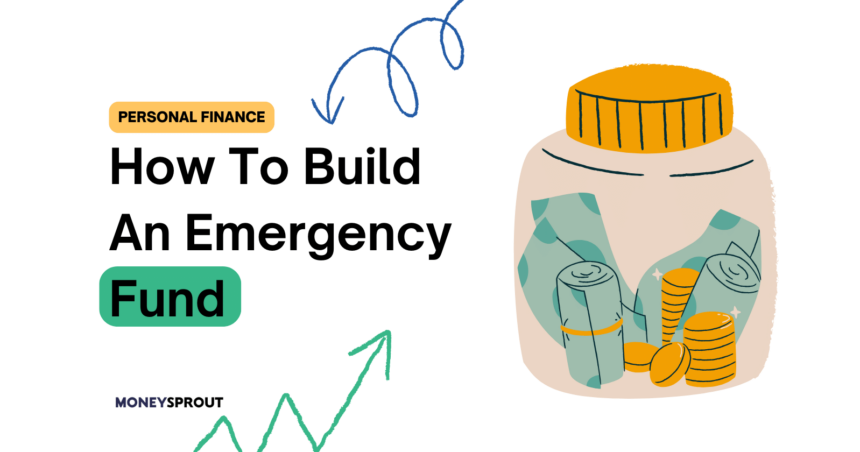As the cost of living crisis seemingly hits harder every day in the UK it’s even more important to have an emergency fund in place. The last thing you want when money is tight is to have to take on debt to pay for an emergency.
By setting aside cash for these things inevitably popping up you are protecting your downside and giving yourself a financial cushion in case something goes wrong. Let’s take a look at the emergency fund and why having one is so important.
What Is An Emergency Fund
An emergency fund is essentially a financial cushion designed to handle life’s unforeseen monetary challenges. These unpredictable occurrences can be both stressful and expensive. Consider scenarios like sudden job loss, vehicle malfunctions, unexpected illnesses preventing work, or even your heating system giving out during the coldest months. An emergency reserve ensures you’re prepared for these financial setbacks.
Why You Should Have An Emergency Fund
An emergency fund is like personal insurance, giving you financial safety and peace of mind for unexpected costs. Without it, surprise expenses can become more stressful, possibly making you fall into debt or compromise your financial future.
When you don’t have this safety net, an unexpected bill can lead to taking on high-interest, short-term debt. Paying this back reduces your available money even more. If another emergency arises or you lose your job, things can quickly worsen. But with an emergency fund, you’re protected from such problems.
Even if you have a lot of investments, you should still maintain an emergency fund. It’s not ideal to withdraw from your investments, as it’s better to let them grow over time. So, regardless of your wealth, keep a reliable emergency fund in a high-interest savings account.
Scenarios Where You Might Use An Emergency Fund
There are an infinite number of reasons you may need to use an emergency fund. It’s important to ensure that you do ONLY use this account for actual emergencies. No, a night out on the town does not count! Here are a few scenarios where it would be appropriate to dip into the account.
- Losing your job (Use emergency fund until you find a new job)
- Household Maintenance (Boiler breaks, a leak in the roof, a pipe bursts)
- You or a family member get ill and need money for treatment
- Car breaks down
- Pet gets ill
These are all reasonable reasons that your emergency fund can be used. Things that don’t make the list include:
- Holidays
- Eating out
- Buying New Clothes
- Spending it on a new car
- etc
How Much Should You Have In Your Emergency Fund
An emergency fund is not a flat rate number. It depends on your income and expenses. If you use our 50/30/20 budgeting method you would have approximately 50% of your expenses going towards your needs. This is the stuff you need to survive such as housing, groceries, utilities etc.
- Monthly Budget Overview
- Custom Categories
- Transaction Log
- View Daily Spending Overview
- Track Needs, Wants, Savings/Investments & Debts
We recommend having a 6-month emergency fund. This is enough money to cover your basic living expenses for 6 months if you ever lost your job or had a major emergency. If you are utilising your emergency fund because you have lost your job, you won’t be spending money on eating out, so we can base these numbers on essentials only.
To calculate how much you need, work out how much you usually spend on necessities each month and times it by 6.
Emergency Fund = Basic Living Expenses x 6 Months
If your budget has £1400 per month going towards necessary living costs you should have an emergency fund of £8400.
£1400/month x 6 Months = £8400
So, work out your necessary monthly expenses and times it by 6 to get your emergency fund target.
How To Build An Emergency Fund Fast
To build your emergency fund, you should use a budget. Here at Money Sprout, we like to keep things simple and use the 50/30/20 rule.
This means that 50% goes to needs, 30% to wants and 20% to saving and debt repayment. The 20% portion should be used to build your emergency fund until it hits your target amount. Even better, use some of your “Wants” money to build the emergency fund even faster.
If you dedicate 25% of your income post-tax towards building your emergency fund it would take you 12 months to fill an emergency fund where 50% of your income is necessities.
12 months isn’t a long time to build a strong financial cushion for you and your family. Once the emergency fund is full you can start investing.
If you want to get to a full emergency fund even faster, you should ruthlessly cut your expenses until it’s full. Audit your bank statements and find those transactions that you absolutely don’t need. Some examples are eating out, unnecessary clothes, takeaways etc.
Note: If you have outstanding debt, first build a 2 month emergency fund and then attempt to pay down your debt as fast as possible. Once you are debt free you can start to fully build your emergency fund.
Your priorities should be Zero Debt –> Full Emergency Fund –> Maxing Pension Match –> Investing in an ISA.
Where To Keep Your Emergency Fund In The UK
The best place to keep your emergency fund is in a high-interest savings account. This means you can instantly access the money if an emergency comes up. Avoid putting the money in notice accounts or fixed interest accounts as you never know when an emergency can pop up.
I currently keep my emergency fund in Chip Savings account as it’s paying over 4% at the time of writing.
Does Investments Count As An Emergency Fund
While having an investment portfolio gives you some sort of protection if you really need money, it’s not ideal. The problem comes when you need to pay for an emergency and the stock market has taken a significant dip. Now you’re selling at the bottom to pay for an emergency that will ruin your long-term returns.
In certain situations, it may take longer than expected to get money out of your brokerage account. In the best-case scenario, it might be a couple of days and in the worst case, it may take over a week to get your funds. If you have a real emergency where you need money today, your investment account won’t cut it.
That’s why keeping your money in an easy-access high-interest savings account is the best option for an emergency fund.
Chip is an award-winning savings and investment app. They became popular with their high-interest savings account but also offer investment services and automatic saving.
- Market leading interest rates
- Easy to use app
- £85,000 Protected by FSCS
- 45p Per Autosave
- Limited Range Of Investment Products
Final Thoughts
An emergency fund is a great financial strategy you can use to protect your finances. Having one in place allows you to be more aggressive with your investments and confident with your money. It also relieves a lot of stress around money. You don’t have to worry about unforeseen problems such as the car breaking down because you already know it’s covered.
Use our guide to creating a budget to get your finances in order and start building your emergency fund today.
Read More From Money Sprout:






